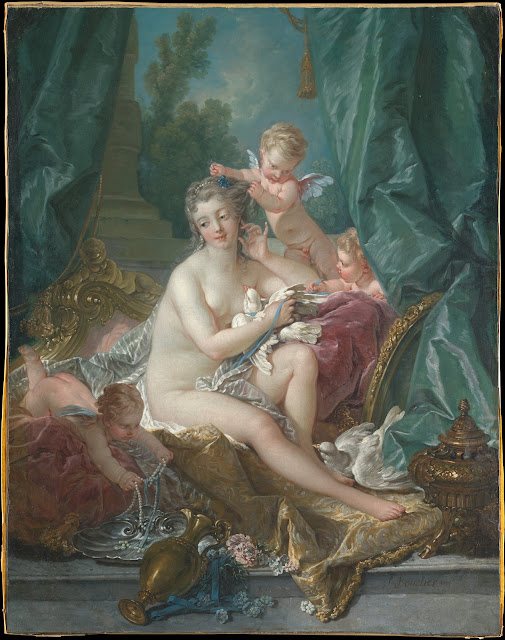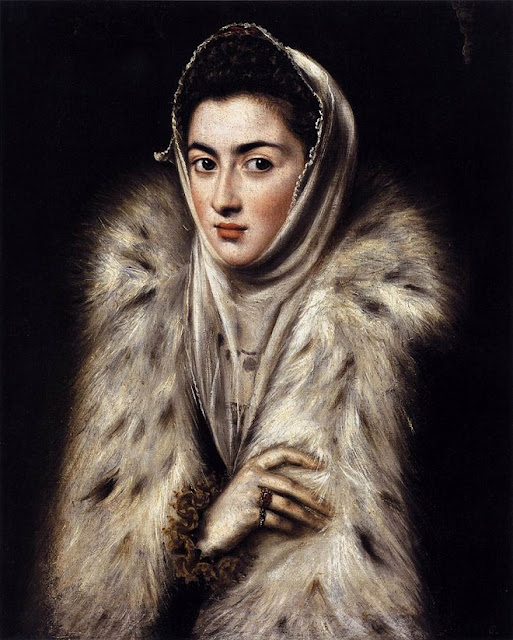Digital Art:
For a long period, Western art was made using tried-and-true mediums such as oil on canvas, marble carved into refined imagery, and orchestras creating beautiful symphonies. Within the past 100 years, the spectrum of mediums available to the artist has grown exponentially, as well as how we, the audience, observe works of art. Making space for the myriad styles of art now produced has proved difficult for a culture so embedded in tradition, but the application of digital art is so varied today that it has found a place in that same culture.
Digital art takes many forms--from Photoshop to videography, movies to video games, the possibilities continue to expand. It builds upon traditional mediums, with many styles such as paintings or concept art being used as a base for the final piece. Digital art allows artists of almost any walk of life or physical ability to express their ideas, beliefs, and emotions through these mediums, and most forms of it are inherently eco-friendly. Though much of its use is in commercialized endeavors, digital forms of art are still able to inspire and move their audience.
All of the works presented below are of my personal taste and a very small sampling of the art available from the digital world.
Photoshop:
One of the most well-known mediums in digital art is Photoshop. The process involves using one or more computer programs to edit photos, often of people, and either enhance or altogether change the starting image. It is time-consuming and requires no small amount of skill, as it is with traditional mediums, but the product produced can often be mesmerizing.
Nik Ainley, "Julia", photoshop. January 19, 2010. Digitally-uploaded, New York.
Nik Ainley, a UK artist based in New York, is known for his refined pieces and has had many famous clients, from Starbucks to Adobe. He uses his self-taught skills in Photoshop to produce gorgeous pieces of art (Tuts+).
The piece above is one of at least two done for Mythic, a former client. In it, we see a central, feminine figure in profile, titled "Julia", looking back at us with an almost seductive stare. While from her shoulders down leads to a nude figure, fading into the bottom of the canvas, from her neck upward she is highly distorted in both form and color. The "skin" on her face is stretched like taffy and colored pink and purple hues. Her green eyes are sharp, drawing the viewer into them and then up to her hair. More saturated hues of pink and purple make chaotic strands that lift into the air, surrounded by metallic orbs that appear to float into the sky above. All of this is placed in front of a dark background, bringing to mind chiaroscuro.
The form itself is striking in both detail and emotion, seamlessly drawing the viewer into the middle of the image and upward, creating a feeling of floating with the figure off of the canvas. Judging from the shape of her neck and the strange orbs floating from her head, it feels safe to assume she is some sort of AI of the future.
It's a very emotionally charged piece, sensual and horrifying in almost every detail. There is a distrustful feeling as if the artist was trying to expose the figure as an illusion, perhaps trying to trick us into believing she is a normal woman, or even human.
Nik Ainley, "Origins", photoshop. January 19, 2010. Digitally uploaded, New York.
Another work from the same collaboration is called "Origins", and again we are greeted by a feminine face, though this time without a body, set in front of a starkly black background.
The head is placed near the bottom of the canvas and again our eyes are led up from there. Her skin has been designed to replicate grass and earth and, similarly to "Julia", her head is opened up, albeit with a more explosive design. From her forehead, the explosion begins, leading the viewer through a whirlwind of earth, light, and small creatures. The bits of earth swirl around, traveling upward, in a chaotic yet mesmerizing display of this dismantling.
The chosen palette is earthy tones with pops of neon pinks and purples, tying it into the first piece.
The image tells a story, possibly about the creative worlds within our minds and how those ideas can coalesce into seemingly tangible realities. The title gives us clues as well, "Origins", harkening back to nature as a living entity all its own.
Animation:
Most people will be closely familiar with the power of animation, from cartoons watched as children to advertisements seen online and beyond. It's a medium of nigh-endless potential, limited only by inspiration and technical ability.
Again, animation often blends both traditional mediums such as drawing and painting with digital ones such as computer programs designed for that specific purpose. It is often paired with music and can be highly emotional or stagnant, depending on the artist and purpose.
Shahzia Sikander. Still from "SpiNN", watercolor on tea-stained wasli paper. 2003. Blanton Museum of Art, The University of Texas at Austin, Texas.
The next two pieces were made by Pakistani-American artist Shahzia Sikander, also based in New York. Sikander is an artist from Pakistan who specializes in Indian and Persian miniature painting (Smart). She began using animation as a medium in 2001 (Maam), saying it was a "natural evolution in her art process" (Smart). She focuses on political and cultural pieces, often imbued with themes from various Middle Eastern religions and fables (Smart)
This work was done for the animation "SpiNN", which debuted in 2003. The screenshot depicts a moment several minutes into the animation, with the central figure Krishna riding on a horse made up of gopis, female devotees, and lovers of the Hindu deity (Wiki).
Sikander still used a measured level of perspective in the piece, following the traditional style of Indian manuscript painting (Morgan). The palette is mostly soothing tones like beige and brown, creating a stark contrast to the red in the image. The entire animation plays out as if it were a scroll unfolding, the most interesting moment being when the women fade into the background and their hair begins to spin, taking on the form of birds as they move as one around the screen.
To view the animation in full and hear from the artist about her process, click
here.
Shahzia Sikander. Still from "The Last Post", 2010. HD video animation. Courtesy of the artist and Sikkema Jenkins & Co, New York.
The second piece is from her animation "The Last Post", a work that comments on colonial history in India and the opium trade with China (Kadist). The work features an unnamed redcoat pictured above. Images fade in and out of the animation, leading the viewer to associate them with metaphorical ideas and political tensions of the time (Kadist).
Sikander often uses layering in her work to tell her narrative, to which she credits her interest in animation (Smart). The feeling of both dread and curiosity is enhanced within, in my opinion. Her chosen palette also adds moments of sadness, perhaps at the loss of culture and identity through the colonization of her homeland. The figure of the redcoat as it breaks away gives a feeling of dishonest identity, or even the dismantling of the colonial rule of India once freedom was attained.
To watch the animation in full, click
here.Video Games:
Flower:
Jenova Chen, Kellee Santiago. "Flower", 2007, video game for SONY PS3, color, sound, Smithsonian American Art Museum, Gift of thatgamecompany, 2013.70.
The final medium I'll be discussing is video games, a medium that, like movies has often been disregarded by the art world. Much like the artists of old, video games often require large teams--if not entire companies--of people to create. "Thatgamecompany" is one such team. Founded in 2006 and based in Santa Monica, CA, the group is dedicated to "developing broadly accessible, artistic, emotional, and enriching experiences"(TGC).
The idea that video games can by themselves be considered art is one that's caused much debate, but one aspect of them that can readily be agreed upon is the many mediums of art that are used to engage players and tell the game's story. A vast amount of effort and dedication goes into making a game in our modern age, and the emotions elicited in the players cannot be denied.
Thatgamecompany is best known for their title "Flower", an award-winning title that was added to the Smithsonian's permanent video game collection. In it, the participant plays as the wind, exploring a vast world where choices and actions have a direct effect on the world around them (SAAM).
One of the first features of this game that caught my eye was the forms chosen to represent wind. Naturally formed flower petals help guide the player through various actions, as well as the world itself. The colors chosen for this game are sometimes bright hues like its namesake or more sedated schemes meant to relax the player. Lighting in this game plays a key role in creating a sense of real nature, drawing the player in with the flow of the controls to make an uplifting and emotional experience.
To see a trailer for this title, click
here.
Journey:
Jenova Chen, Kellee Santiago. "Journey", 2010, video game for SONY PS3. Santa Monica, CA. Pictures courtesy of Steam.
Another title by this company is called "Journey", and it is breathtaking, to say the least. In it, the player explores the mysterious world of Journey as a humanoid figure that can soar high above the ruins they explore (TCG). Another award-winning title, Journey pits the player against a myriad of puzzles that bar them from their ultimate goal, the top of a distant mountain.
As with "Flower", players often float through "Journey", though this time there is a deeply emotional element in connection with the humanoids played and met along the way. The decision to have a figure whose face is covered adds not only to the mystery but also creates a sense of the player truly being the one adventuring.
Lighting in this game is a central component, with brighter areas adding a sense of wonder and hope, and darker areas creating innate dread. The colors chosen for this game are often oranges, yellows, blacks, and blues, both separating the moments of dread and joy and elevating the player to an almost divine world.
As with all of their titles, the music chosen for this game truly draws the player in.
Click
here to enjoy the trailer for Journey in full.
In closing, I think it essential that artists continue to explore the growing mediums at their disposal. What was once only possible through orchestra or canvas, art can now be experienced by almost anyone. Emotional experiences and storytelling are what truly define art, in my opinion, and limiting ourselves to outdated ideals of recreating the work of the Masters greatly limits the potential for art to grow.
Works Cited:
Ainley, Nik. “Art and Illustrations of Nik Ainley.” Shinybinary, 2022, shinybinary.com/index.html.
Ainley, Nik. “Depthcore XL Mythic.” Behance, 19 July 2010, www.behance.net/gallery/584753/Depthcore-XL-Mythic.
Ainley, Nik. “Nik Ainley - Envato Tuts+ Profile.” Envato Tuts+, 11 June 2008, tutsplus.com/authors/nik-ainley.
Art21, "Shahzia Sikander, The Last Post," in Smarthistory, August 27, 2021, accessed November 21, 2023, https://smarthistory.org/shahzia-sikander-the-last-post/.
Chen, Jenova, and Kellee Santiago. “Flower.” Smithsonian American Art Museum, 2023, americanart.si.edu/artwork/flower-86512.
Gallery, Eden. “Digital Art: What Is Digital Art Definition?” Eden Gallery, 9 Sept. 2021, www.eden-gallery.com/news/what-is-digital-art.
Kadist. “Shahzia Sikander: The Last Post.” Kadist.Org, kadist.org/work/the-last-post/. Accessed 20 Nov. 2023.
The Morgan. “Spinn (III).” The Morgan Library & Museum, 24 June 2021, www.themorgan.org/exhibitions/online/shahzia-sikander/spinn-iii.
Tcg. “Team.” Thatgamecompany, 5 July 2021, thatgamecompany.com/our-team/.
Wikipedia. “Shahzia Sikander.” Wikipedia, Wikimedia Foundation, 19 Oct. 2023, en.wikipedia.org/wiki/Shahzia_Sikander.








Comments
Post a Comment